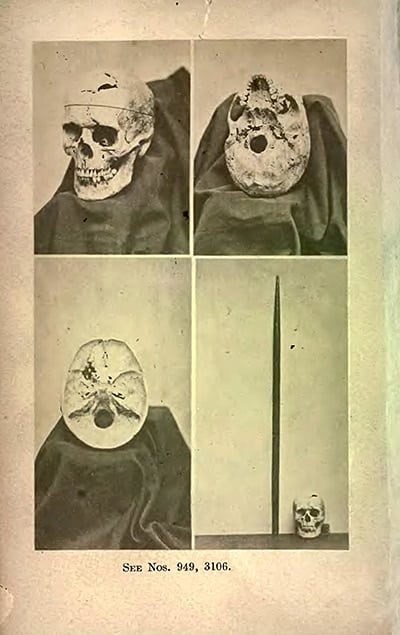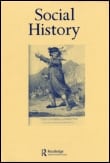Storefront revolutionary: Martin Sostre’s Afro-Asian Bookshop, black liberation culture, and the New Left, 1964–75
Household economies, social norms and practices of unpaid market work in Europe from the sixteenth century to the present
Welfare Bulletin (1914)
Frank Hirahara in Heart Mountain Internment Camp, Wyoming (1942)
Below the poverty line: slum Britain in the 1960s
When women disappear from the labour market: occupational status of Dutch women at marriage in a modernizing society, 1865–1922
The Social Welfare Forum: Official Proceedings [of The] Annual Meeting, Volume 24 (1898)
Policing the Factory: Theft, Private Policing and the Law in Modern England
Placement Practices of the Kingston (Ontario) Orphans’ Home, 1857-1876
Saul Alinsky: The founding father of community organizing
‘Beauty isn’t all a matter of looking glamorous’: attitudes to glamour and beauty in 1950s women’s magazines
Norman Geschwind and the Use of History in the (Re)Birth of Behavioral Neurology
Barbara Wootton (1897–1988): pioneering social scientist, feminist and policymaker
From Camp Life to Suburbia: Aboriginal Housing in Perth
‘I am just the man for Upsetting you Bloody Bobbies’: popular animosity towards the police in late nineteenth-century Leeds
Gender, Race and Family in Nineteenth Century America: From Northern Woman to Plantation Mistress
Divorce in Medieval England: from one to two persons in law; SARA M. BUTLER
Sympathetic insanity
‘The world is full of big bad wolves’: investigating the experimental therapeutic spaces of R.D. Laing and Aaron Esterson
Asylum Architecture: Corridor Plan
From the Netherlands to Japan: communicating psychiatric practice in the 1830s
History of Changes to the Minimum Wage Law
Unit accounting in social work
Slate: Phineas Gage, Neuroscience’s Most Famous Patient
Migration, Health and Ethnicity in the Modern World
Dismissal of strikers and industrial disputes: the 1985–1987 strike and mass sackings at Silentnight
‘The perfect equality of all persons before the law’: the Personal Rights Association and the discourse of civil rights in Britain, 1871–1885
Weston State Hospital
Therapeutic Landscapes: A History of English Hospital Gardens since 1800
The Independent Workers Union: class, nation and oppositional labour movements in Ireland from 1900 to the Celtic Tiger
Education for Social Work (May 1, 1921)
Hampshire County Asylum, Park Prewitt
Park Prewett Asylum (Park Prewett Hospital), in Basingstoke, was the second county asylum of Hampshire, it was proposed in 1898 to relieve the overcrowding of Knowle asylum in Fareham. Building work was started in 1910 but the asylum was not officially opened till 1921 having suffered a delay due to World War One when the Canadian military used it as the Number Four Canadian General Hospital. The asylum was again affected by World War, when in 1939 the patients were moved out so it could be used an an emergency military hospital for casualties from Europe.
Front porch politics: the forgotten heyday of American activism in the 1970s and 1980s
Letters of love and loss in a time of revolution
Demonic possession and the historical construction of melancholy and hysteria
The Children’s Bureau Legacy: Ensuring the Right to Childhood
Social Work Scotland: A brief history
Mental Hygiene and Child Guidance in Post-war Greece: The Case of the Centre for Mental Health and Research, 1956–1970
Labor Day
The Voting Rights Act of 1965: Background and Overview
The Voting Rights Act is a landmark federal law enacted in 1965 to remove race-based
restrictions on voting. It is perhaps the country’s most important voting rights law, with a history
that dates to the Civil War. After that conflict ended, a number of constitutional amendments were
adopted that addressed the particular circumstances of freed slaves, including the Fifteenth
Amendment that guaranteed the right to vote for all U.S. citizens regardless of “race, color, or
previous condition of servitude.”
The emergence and development of psychopathy
Women Worthies and Feminist Argument in Eighteenth-Century Britain
Pavilion Plan
Hellesdon Hospital, Norwich. The pavilion plan consisted of a long linear corridor extending either side of the administration block, the ward blocks were orientated perpendicular to the corridor and attached at their ends; the stores/water tower could located centrally or remotely.











































